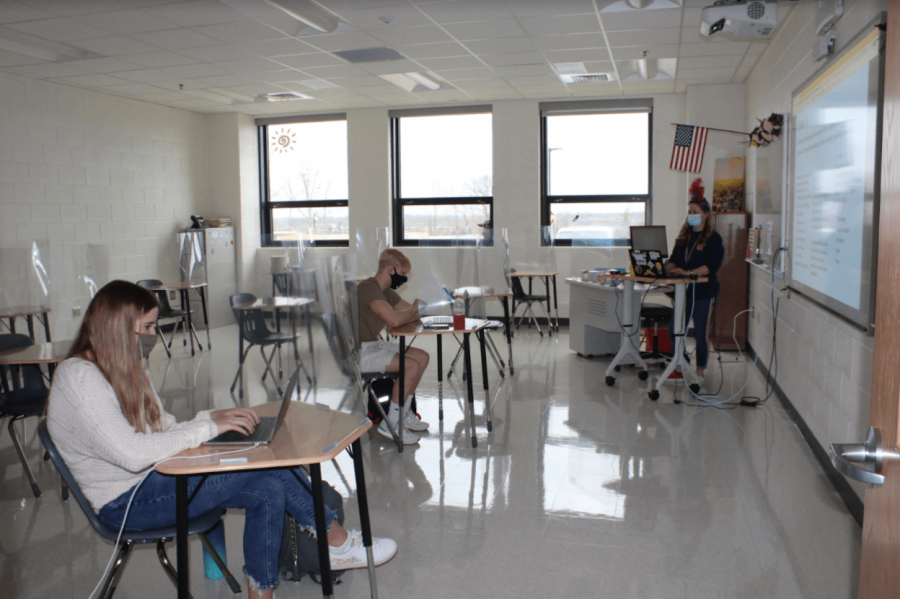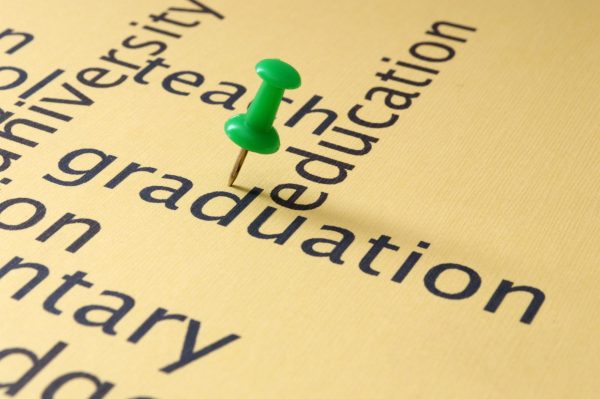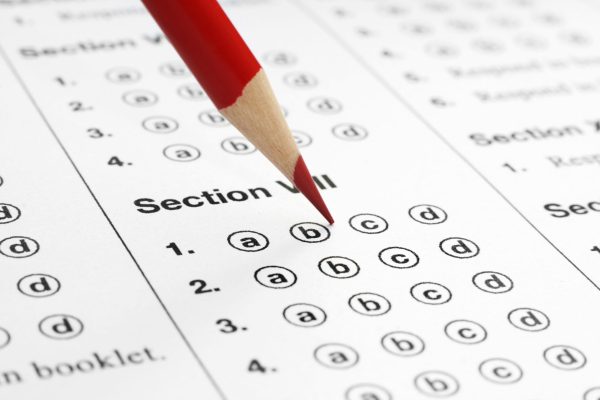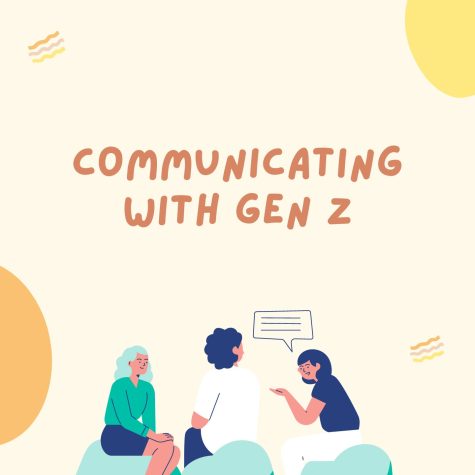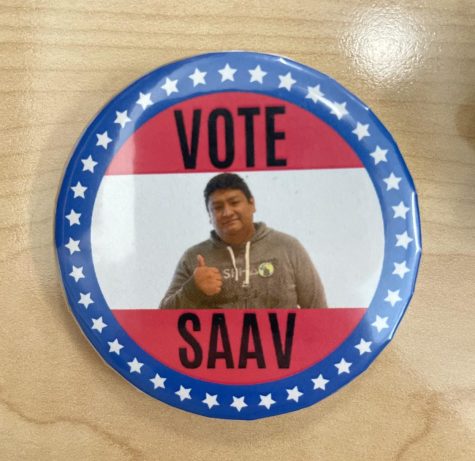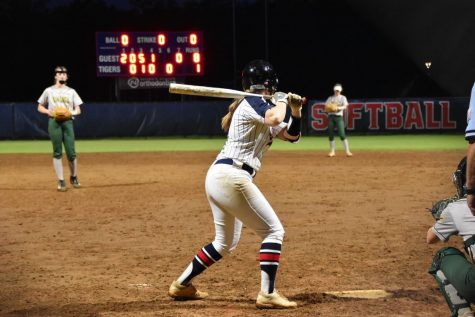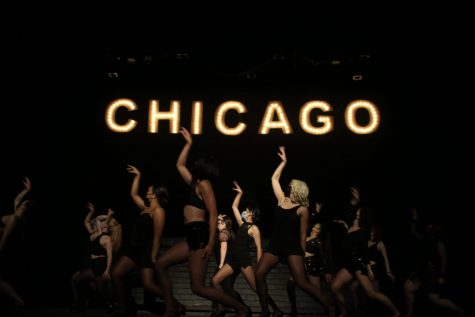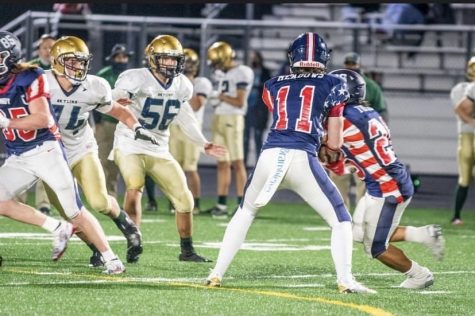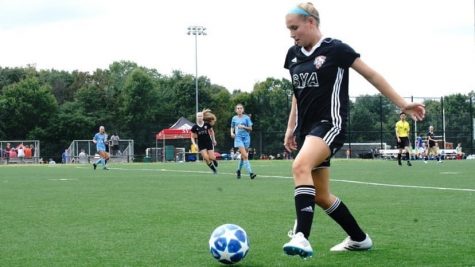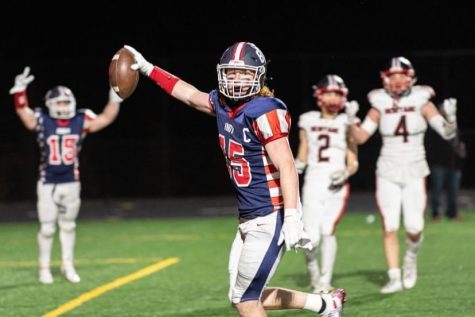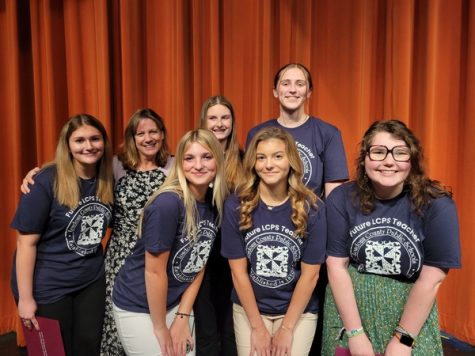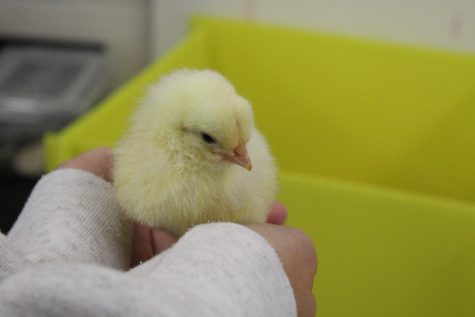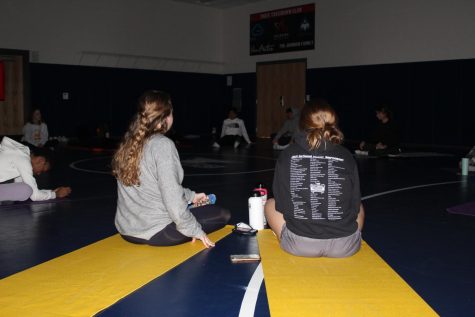Back to School: Teacher’s Safety During Hybrid Learning
Mrs. Bales teaches two distance students while also speaking to her online students through Google Meet. Photo source: Ms. Sheridan
Last summer, eagerness to return to normalcy after months of the COVID-19 pandemic included plans to reopen schools, sparking contentious debate regarding the extent to teachers’ obligations to their jobs — the education of the next generation of leaders in our country. Some argued that they had the responsibility to return to schools to prioritize America’s children, while others thought teachers needed a larger voice over the decision to reopen, especially since the final choice was life-threatening in many areas of the United States. At the forefront of this debate lay the issue of teachers’ safety in the workplace. The debate about overall safety in schools during the pandemic has been revived since LCPS’s reopening for hybrid on March 3.
Last summer saw local and state governments trying to weigh their decisions about the speed at which to reopen based on COVID safety concerns, the public’s desire to return to pre-pandemic normalcy and the health of the economy. The desperation to feel regularity and familiarity after long isolation often led to what some considered poor decision-making on behalf of authority, and teachers were especially hit hard in this respect.
Back in July, vaccines had yet to be approved by the Food and Drug Administration (FDA) for distribution to essential workers. LCPS had a plan to open high schools up for hybrid in September, but this decision was ultimately reversed before the first day of school because of rising numbers in case counts across the county.
Mr. Mario Saavedra, an AP/DE biology and research biology teacher at Independence, stated that he felt very unsafe as a teacher knowing he would return to school without having his safety guaranteed at that point in time. He explained his thoughts about the premature decision to reopen saying, “I didn’t know what would happen. Early in the pandemic, I gathered protective gear to keep me safe in case I was called to teach.”
As a teacher, he said he was more scared for his family than himself because of his age. He explained that he “had a conversation with them in the summer.” Saavedra continued, “I told them that if I was called to teach before getting the vaccine, I would not visit them until [they] all had the vaccine.”
Saavedra felt “powerless” during the summer because he knew he didn’t really have a choice on whether or not to return to school during a time of high risk. This was a widespread concern among many teachers in the summer of 2020.
Ms. Hannah Ange, an English teacher for freshmen and sophomores at Independence, noted that “in general there should be more voice and choice, and people should have a say in things, including teachers; they should have taken teachers’s opinions into account.” Even so, Ange remarked that she was not as concerned for her own health when the plan to reopen in September was still on track. She explained, “I think we weren’t ready for that [reopening] in September, but I was still willing to do hybrid even though I wasn’t vaccinated. Also, I’m younger and I’m not immunocompromised, so I think I’d be a better candidate for that.”
When schools opened for distance learning on September 8, teachers had the option to return to teach from their classrooms at Independence or from home in order to reduce the spread of COVID-19.
Ms. Ange, who graduated from Virginia Tech in May 2020, opted to teach from Independence instead of from home because she wanted to better integrate herself into her new work environment. “I feel like I work better in a classroom environment,” she said. “I like the separation of work and home rather than having them both in the same place, also being part of the school because I had never been here before. I actually liked coming in and actually being at school. It felt more real and into it from my desk.”
On March 3, schools finally reopened for hybrid after postponing a plan to return in late January. Students who chose hybrid were divided into two sections: one group would receive in-person instruction on Tuesday and Wednesday while the other would go to Independence on Thursday and Friday.
Ange made a few observations on teacher responses to rumors of reopening. “I know every single time [a new plan was presented] I think there was panic and conversation among teachers.” However, she explained, “I thought, whatever happens, happens, whether that happens in September, or January, or March or whenever. But that’s how I am; I am more calm when it comes to this situation.”
Within the first ten days of reopening, LCPS reported 14 COVID-19 cases at Independence High School, none of which were transmitted on school grounds.
When asked if she felt safe returning to school in March, Ange said, “I actually feel safer in general now that I have the vaccine. I know I’m not invincible or anything, and obviously I still take every single precaution. I’m a healthy person, and I’m younger, so I’m not in any of the risk groups that are more susceptible to getting it or would be more dangerous to get it.”
Saavedra echoed this statement saying, “The county and our school have done a lot of work to keep us safe, but I am still cautious because we are about to go four days a week instead of two. You just have to take it one day at a time.” He continued, “I needed a change of environment, and I missed my students. I feel blessed to be back at school. It is amazing how a student’s smile and laughter can make your day and forget that we are in a pandemic, at least for a moment.”

